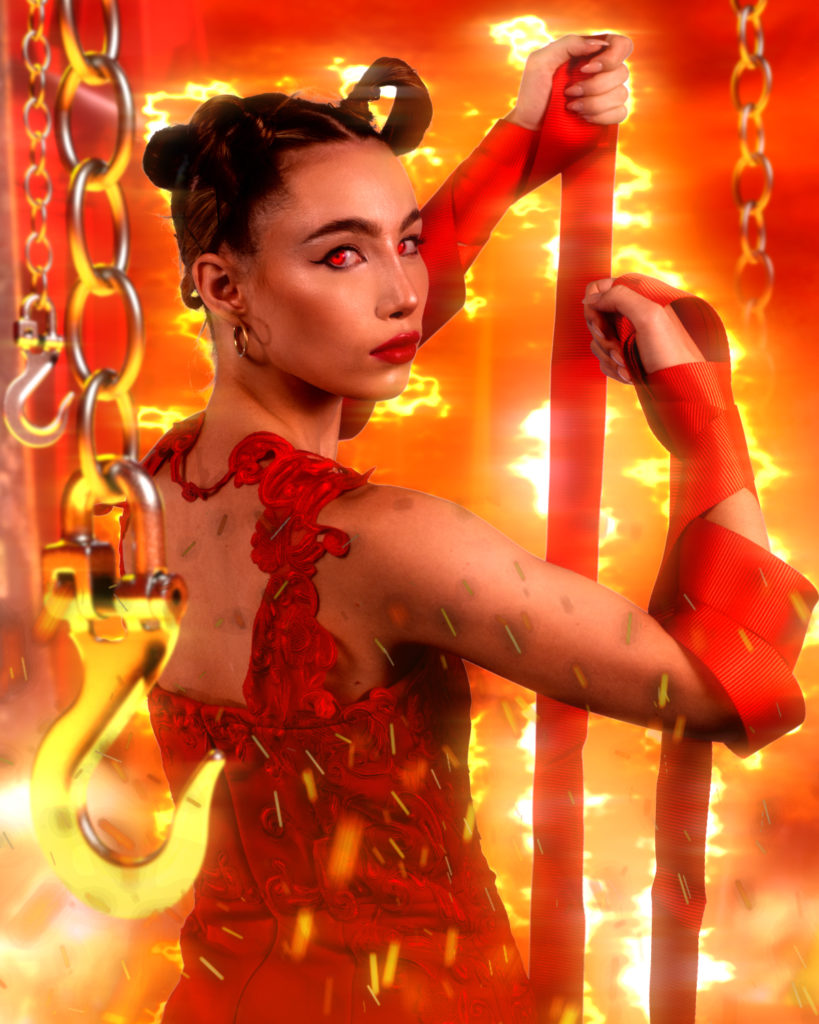Playstation Dreams: How Final Fantasy helped shape our individual style

A GUAP editorial by Edward Maurice Hartley
The formula for high-fashion today contains some complicated alchemy, but we can attempt to distill it down to its parts. A handful of gothic revivalism mixed into Y2K dystopianism. A pep of prep mixed with punk dilute. Schoolgirl skirts, swamp-core and swarovski crystals.
This aesthetic mix might seem like a big change in direction if you got comfortable with the millennial-core minimalism that defined style in the 2010s. But it will be a pleasingly familiar skin for those who grew up playing classic video-games like Final Fantasy, Tekken and Kingdom Hearts.
Character designers on these early titles, like Yoshitaka Amano and Tetsuya Nomura, took strident artistic liberties with their references. Mixing the styles of the 90s and 2000s with gothic, prep, military and historical looks, they created a bold and rule-breaking aesthetic that, for many of the Y2K generation, formed our earliest introduction to personal style.
Amano, after art-directing the controversial but acclaimed 1985 Neo-Gothic anime Angel’s Egg, became Square Enix’s founding character designer on the Final Fantasy series. Highly influenced by the European art nouveau movement, ukiyo-e art and the geishas and gowns of Imperial Japan, Amano blended styles to create elaborate character silhouettes. The result was an immediately iconic style, that would be recognisable even when reduced down to the bare pixels of first-generation graphics.
Amano was succeeded as chief character designer on the series by Tetsuya Nomura in 1997, a boom time for Japanese high-fashion. Having grown up in the 1980s, Nomura was inspired by what he saw contemporaries like Rei Kawakubo do to bring Japan’s domestic scene to a global audience. He was influenced too by Vivienne Westwood, who had helped popularise the punk aesthetic among a youth in Japan who were heavily invested in their subcultures.
At this time, Japanese “designer character” culture – a movement born in the harajuku district of Tokyo that popularised prep, punk, lolita and rococo looks – was taking the style conscious Japanese youth by storm. When designing his iconic characters for Final Fantasy and Kingdom Hearts, Nomura drew many of his influences from their world. The look for Final Fantasy X’s Yuna, a priestess character, directly referenced a trend by harajuku designer and singer Takuya Angel, that incorporated kimonos into angelic stage outfits.
Together, Amano and Nomura dreamt up a softer and more effeminate look for the fantasy genre, one that would go on to change the face of the genre at large. If we look at the androgyny that runs through today’s style, and the rise of femboy culture online, we can see that they were setting a zeitgeist. Final Fantasy VII, subject to a next-generation remake last year, featured male hero Cloud wearing a dress in 1997: a timely role model for a generation more comfortable in the maid’s outfit than the business suit. Genderlessness, although not explicitly stated, is a quality visible in many of the series’ protagonists and playable characters.
“There are various ways to show an individual’s uniqueness in the real world, but within the limited world of a video game, clothing is one of the most important elements that express and define a character’s individuality,” explained Nomura in an interview with Bloomberg. “One of the biggest elements that helps the player to better imagine a character’s personality or background is fashion”. Often ahead of their time, Square Enix celebrated 25 years of the Final Fantasy franchise in 2012 with a campaign in collaboration with Prada, and commissioned Vivienne Westwood, one of this year’s most in-demand designers, to create a dress for Final Fantasy XV back in 2016.
With that, fantasy and science-fiction go from the pages of the anti-fashion playbook to defining today’s trends. As we edge closer to the metaverse, the aesthetic rules and boundaries that once existed between physical and digital are disappearing. Styles that we thought could only exist in virtual realms are starting to seem more appropriate for the world we physically inhabit. Simultaneously, as we continue to explore our identities in metaphysical spaces, the markers of individual style are becoming increasingly digitised. As the newly rebranded tech conglomerate Meta recently tweeted: “what is the dress code in the metaverse?”.
To celebrate this fashion legacy, GUAP magazine teamed up with creative director Mercy to create four fantasy characters of our own. Introducing..
GUAP FANTASY
The Biker of Broken Chains
Born into the dark slums of an unforgiving capital city, she has risen through the ranks of the criminal and anarchist factions that fight for control of her homeworld. With a capitalist State erasing her planet’s biodiversity through rampant industry, her life has become devoted to fighting its injustices. Today, she is the head of a renowned and dangerous gang of self-styled freedom fighters, and sits at number 3 on her planet’s most-wanted list.
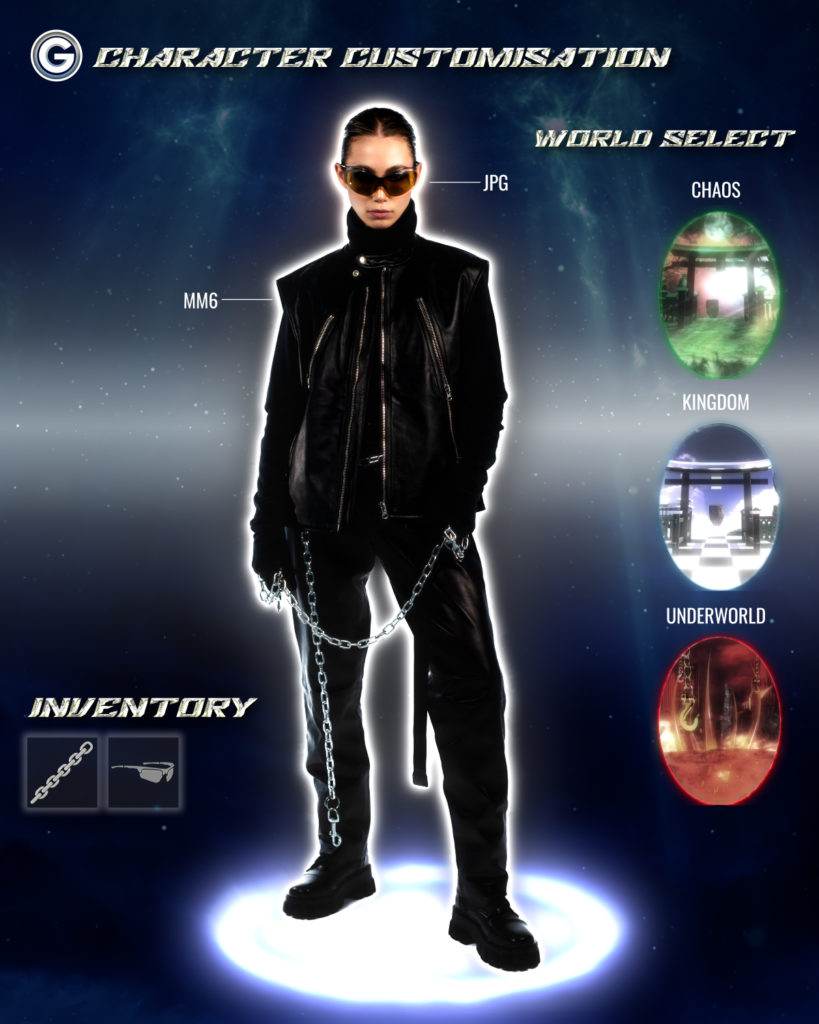
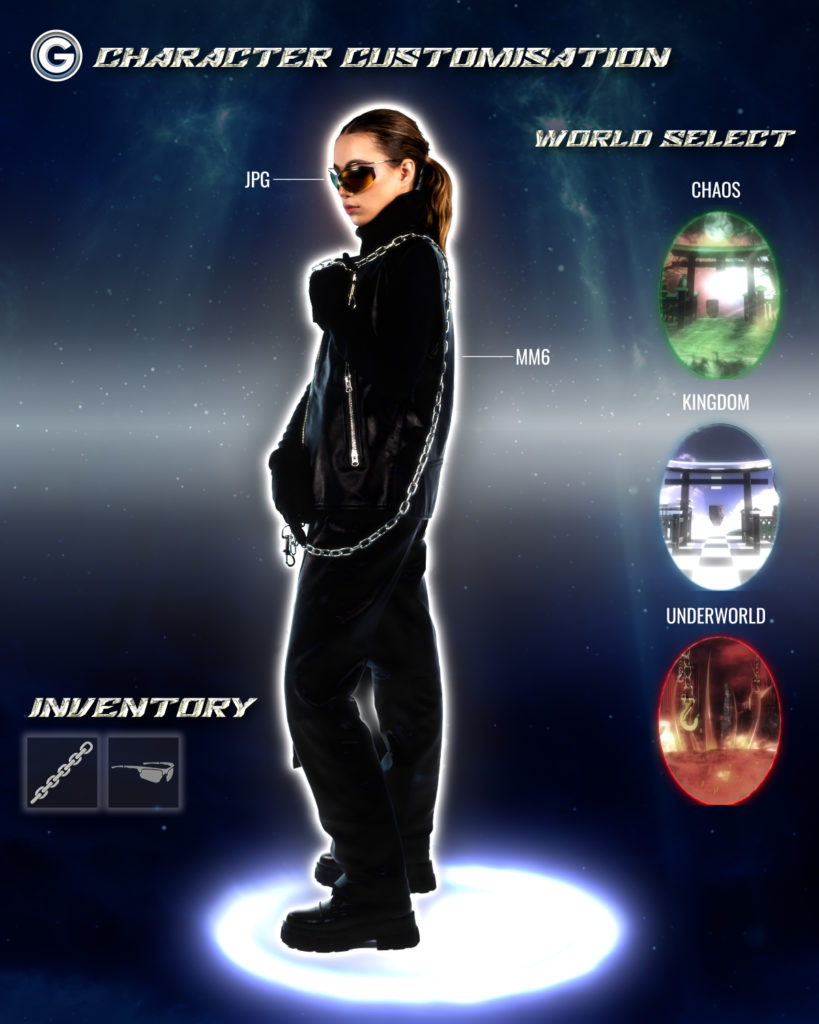
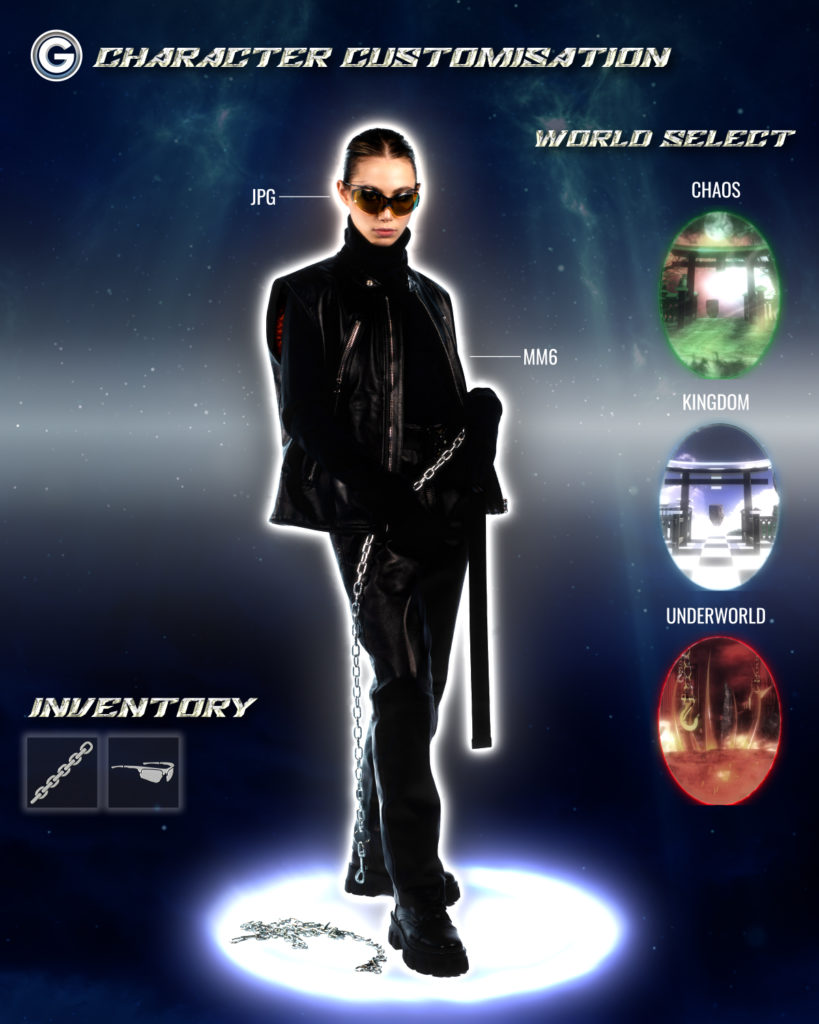
Demon Daughter of the Underworld
The only daughter of the Lord and Lady of the Underworld, she is the immortal scion of the hell realm, raised from birth to command the powers of fire and darkness. She serves her realm as an emissary to the land of the living, where she collects tribute in the form of sacrificed souls. An ancient blood price, paid to her family for their centuries of work keeping the spirits of the Underworld at heel.
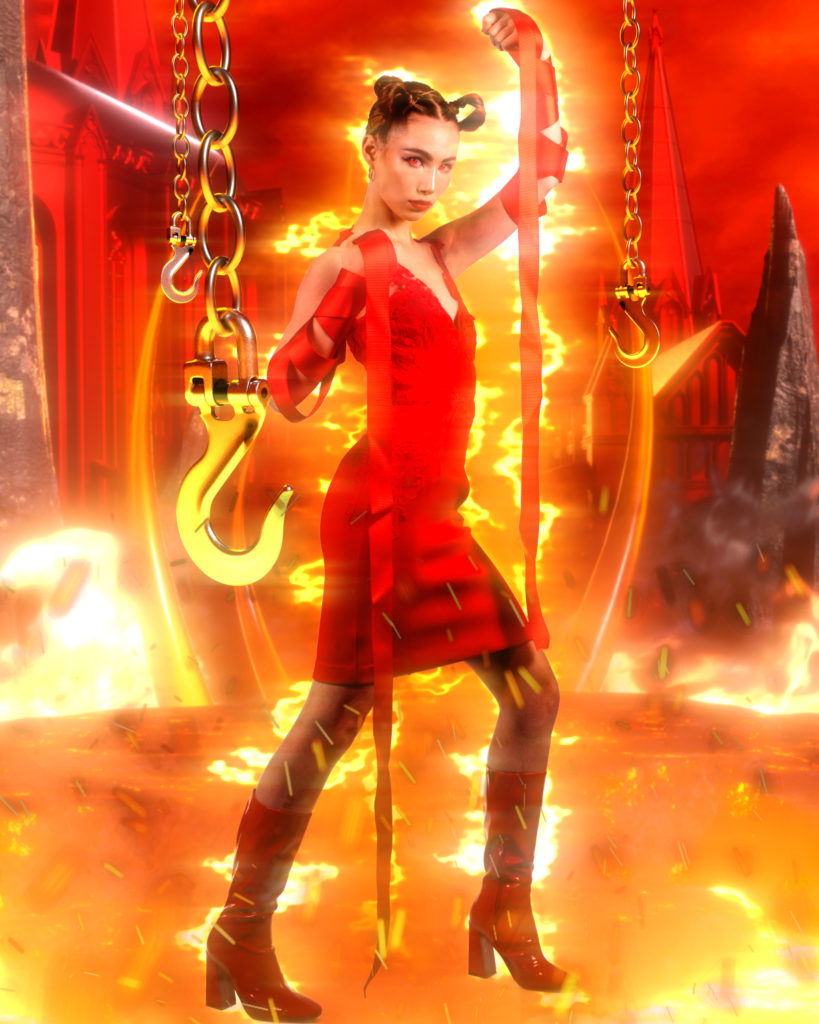
Princess of the Moonlit Kingdom
Recognisable by her rabbit’s head helmet and shining silver armor, she is heiress to the Moonlit Kingdom. Trained from childhood in swordplay and light magic, she was born with the ability to summon forth familiars who take the form of angelic, furry creatures. She awaits her 21st birthday, when she comes of age to fulfill her prophecy and embark on her maiden adventure.
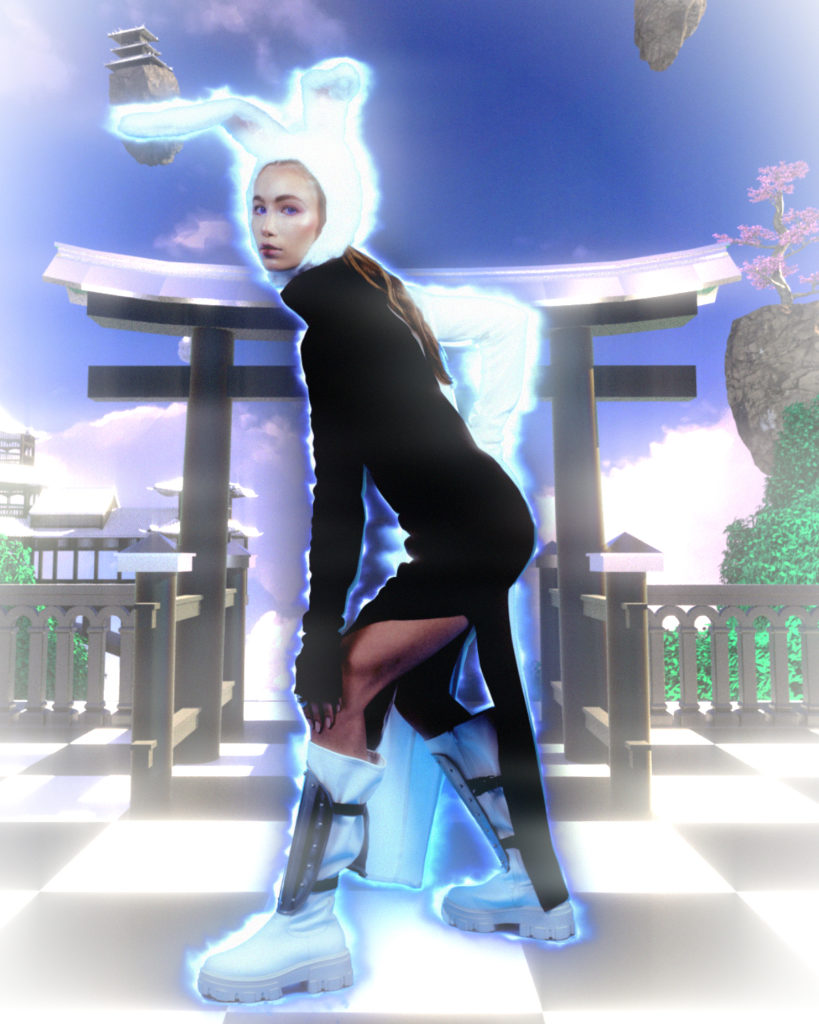


The Court-Jester of Chaos
The closest confidant and most illustrious servant of the Queen of Chaos, she has risen from obscure beginnings to become a key figure at her court. A natural trickster, she uses her guile and charm to thrive in the toxic, apocalyptic land into which she was born. Possessing dark magic that can harness chaos and disharmony, she fools and manipulates her adversaries into submitting to her every whim.
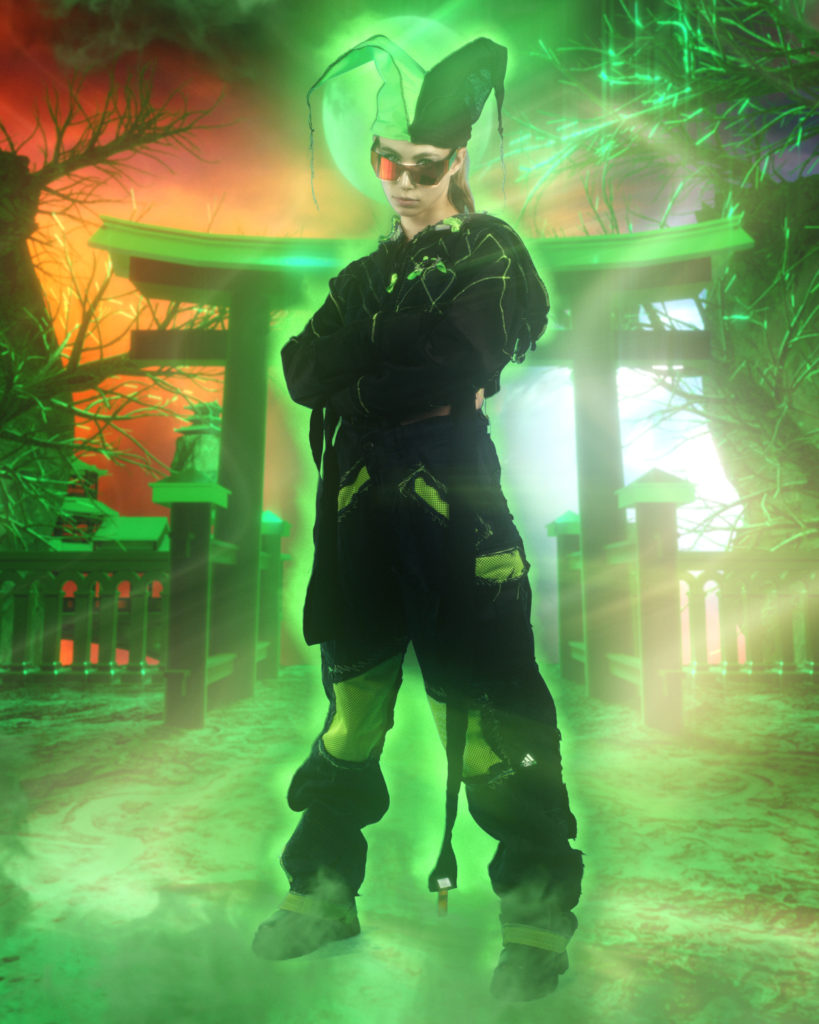
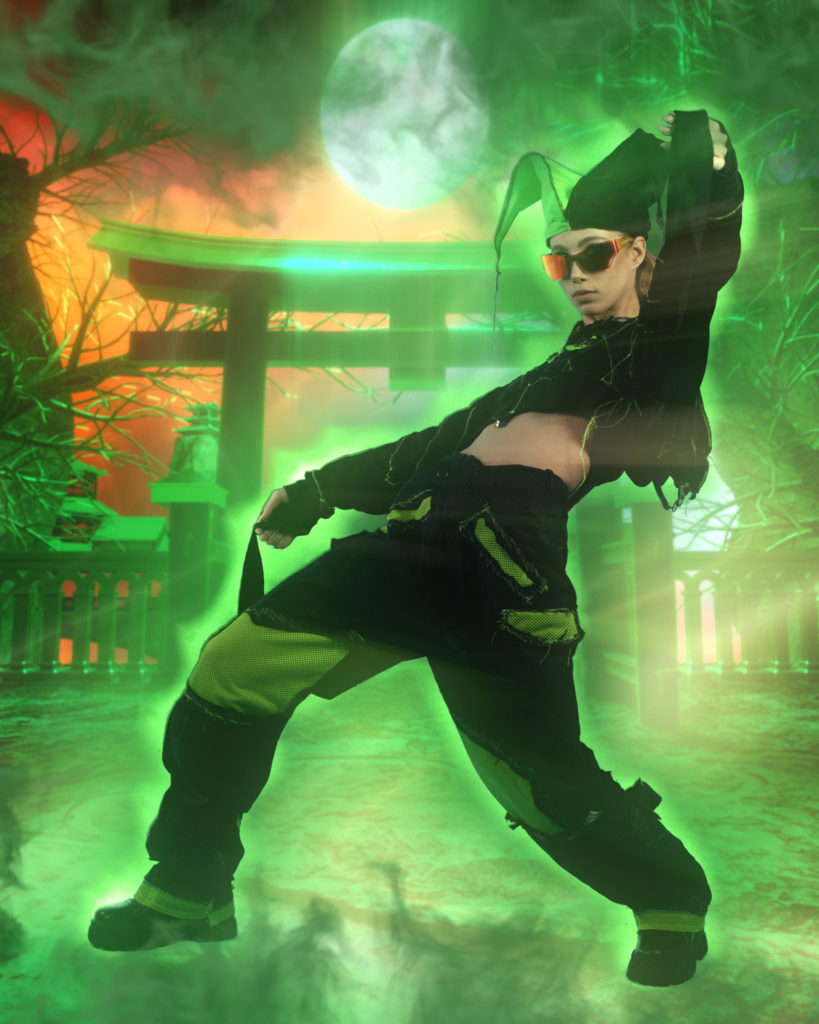
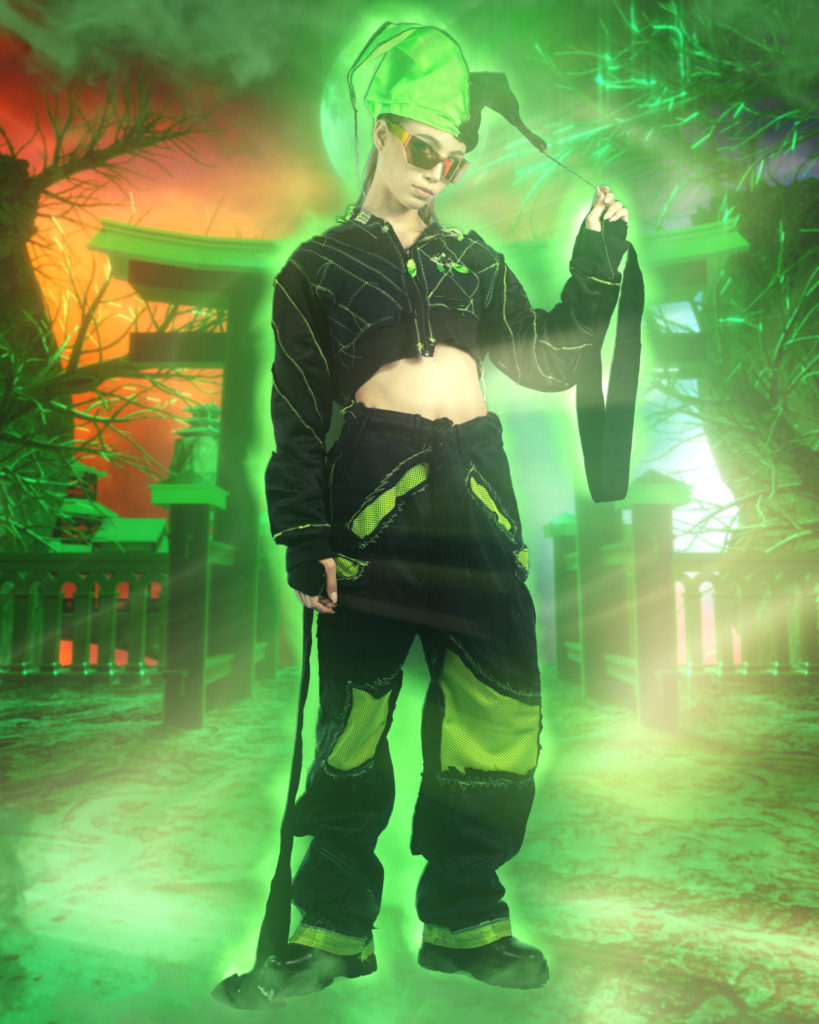
Photographer Terna Jogo
Creative Director Mercy
3D Artist & Art Director Jordan Chappell
Make-Up Betty Traore
Hair Alison Holmes
Stylist Koya Adebanjo
Model Nicole Pereira
Assistant Creative Director Grey Byron
Videographer Nakash Maqsood-Hussain
Editor Sam Adjaye
Discover more from GUAP’s Fashion section here





![ZINO VINCI’S ‘FILTHY & DISGUSTING’EP BRINGS YOU TO THE CORE OF THE ARTIST [@ZinoVinci]](https://guap.co/wp-content/uploads/2023/10/Zino-4.jpg)


